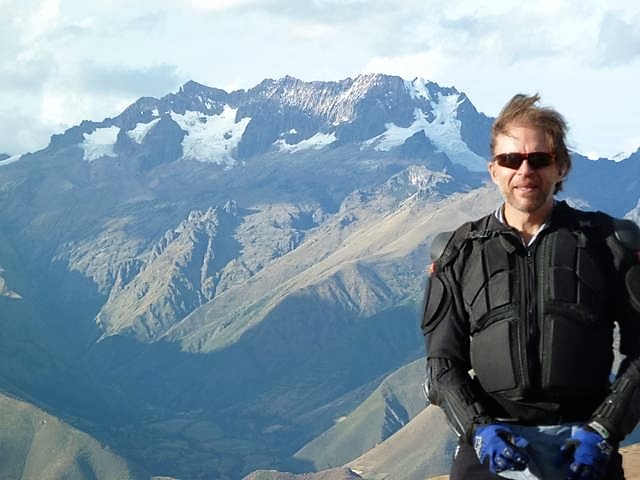Abra Malaga bike ride downhill all the way to the Sacred Valley.
Today was one of the highlights of my trip. It was a great combination of fun
mountain bike riding on continuous down hill runs, and seeing some of
the famous ruins in the Ollantaytambo and Sacred Valley areas.

Abra Malaga
is a high mountain pass at an elevation of 3,256m (10,682 ft) above the sea
level, located in southern Peru on the Continental Divide of South America.
The road to the pass is extreme. This road is very exciting and sometimes very exposed and unsecured driveway in innumerable twists and turns. It’s asphalted and is called 28B. After the Inca town of Ollantaytambo the asphalted road climbs in numerous hairpin bends, each offering a still more spectacular view of the Sacred Valley. On the eastern side of the summit, the road descends into an area de neblina — a rugged area characterized by mist, puna grasses, and fens.

At 8:30am Phil, a fellow traveller from the USA and I are crammed into a taxi
with two guides, four bicycles and gear that is suited to a motor cross
competitor. Phil and I cannot believe they can run this trip for US $60
each, but they are.

We were heading to Abra Malaga, a high pass near Ollantaytambo of 4316 metres
above sea level. (Map Courtesy
Google) It takes almost 3 hours to get there.
At 4316 metres it is a struggle to walk let alone cycle. I am sort of
acclimatized, but a week in Manu national park and significantly lower
elevations of Cusco doesn’t make it easy. We stand briefly for our photo
shoot and it’s time to descend.

It is just as well we are rolling down hill. We will descend to around 3000 metres for our first leg of the journey. What a great ride, mostly single track. Some scary bits, but most of it quite enjoyable.

Phil was uncomfortable as he hadn't ridden for some years and is not used to
single track, but for me it was fantastic. Would have liked my Trek dual
suspension here, but the bikes provided were very good and I simply stood most
of the way to absorb the bumps. There is a road and trail option, so Phil took
the road on the more intimidating sections. (Map courtesy
Gaia gps)
We ride over pre-Inca ruins. Anywhere else these would be fenced off and a gate
charge applied – and mountain biking over them ? Mind you there is probably less
damage than walking with the inflated rubber tyres versus heavy tread.


We stopped in Ollantaytambo to witness some celebrations in the city square. I
am not sure of the reason for celebration, but I think it's something to do
with the Spanish invasion, people were wearing grotesque caricatured
masks

and there was plenty of dancing.

Ollantaytambo, what a nice town. I have passed through now three times and never really stayed. I reckon it would a more pleasant experience to perhaps stay here the first night when landing at Cusco if my intent was not to go the other direction to Cachora. It is smaller, less frenetic and has a a great backdrop of Inca and pre-Inca ruins.



Into the Sacred Valley to see the ancient public amphitheatre at Maras & Moray:

The salt mines are quite interesting:

I was glad to have ridden with these guys, it was effectively a bespoke trip.
We spoke to Wilfredo, one of the guides to arrange to fill our last day and
was happy to stay at a Quechuan village he was brought up with, looking
forward to that.
Blog Indexes
Navigate
- Prev: Last day in Manu Park
- Next: Cusco


Comments
Post a Comment